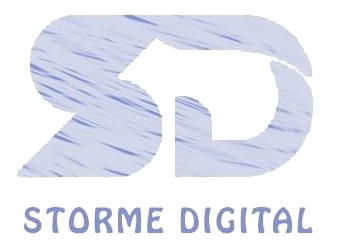Creating content is no longer limited to blog posts and static visuals. With platforms prioritizing short-form videos, the spotlight has shifted to reels, shorts, and AI-generated visuals. However, without proper SEO, even the most engaging content might remain invisible.
At Storme Digital, we help creators, influencers, and brands tap into effective strategies to optimize their multimedia content for search.

1. The Rise of Short-Form Video SEO
Short-form videos dominate engagement. Platforms like Instagram and YouTube reward high-retention content. However, optimizing titles, captions, and metadata remains essential for discovery. These micro-videos need keyword targeting just like any blog.
Shorts and reels are often shared widely, but if they lack SEO alignment, they miss out on sustainable visibility. Optimizing video file names, descriptions, and alt texts where applicable helps align content with search intent. Cross-promoting short videos with keywords in accompanying social media or blog posts can also increase discoverability.
2. Why Traditional SEO Tactics Still Matter
Google and YouTube rely heavily on contextual signals. Well-optimized titles, hashtags, and even voiceovers contribute to higher visibility. Adding keyword-rich subtitles or descriptions improves crawlability. So do custom thumbnails with alt tags.
Schema markup and structured data remain underutilized tools for creators. Applying schema to video posts or embedding metadata in AI-generated assets can significantly increase the chances of your content appearing in rich results.
Traditional SEO tactics are foundational and must complement your innovative content strategies.
3. AI-Generated Content and SEO
AI tools can create videos, images, and even voiceovers. However, these assets need human editing to ensure alignment with your brand’s search goals. Search engines value relevance and user engagement. That means combining automation with smart optimization.
Content made with AI must still feel natural and compelling. Algorithms can detect poor grammar, generic tone, and low engagement signals. Adding personal insights or branded narratives to AI-created material helps bridge this gap, ensuring better SEO performance.
4. How to Optimize Reels and Shorts for Search
Use trending sounds relevant to your niche. Pair them with captions that include searchable phrases. Add location tags and hashtags strategically. Optimized reels have higher chances of being featured on explore pages.
Make use of closed captions and on-screen text to reinforce important keywords. Video titles should be clickable, curiosity-inducing, and keyword-aligned. Think of your video like a mini-landing page—every component matters for visibility and retention.
5. Do Not Skip Metadata and Captions
Most creators focus only on visuals. But the supporting text tells algorithms what the video is about. Work with an seo company with proven results in Gurugram to identify high-performing keywords for your content format.
Metadata includes everything from filenames and thumbnails to alt text and category tags. Captions are especially useful for users with the sound off and improve accessibility, which in turn enhances engagement metrics—an important ranking factor.

6. Repurpose AI-Generated Assets Wisely
AI-generated visuals can enhance your reels and shorts. But originality still matters for ranking. Always add a human touch—voiceover, commentary, or branding elements help distinguish your content from others.
Consistency in voice, tone, and format builds brand authority. Repurposed content should not feel recycled. For example, a blog can be turned into a reel, then transformed into a carousel post, with each version tailored to platform-specific SEO rules.
7. Structure Your Content Like a Funnel
Begin with a hook, educate in the middle, and end with a CTA. Search engines track watch time and drop-off rates. Maintain a consistent posting schedule. This keeps your content fresh and signals quality to platforms.
Treat each video as part of a larger content funnel. Align your short-form videos with long-form blogs, email newsletters, or landing pages. This drives traffic in multiple directions while reinforcing your keywords and message across channels.
8. Leverage Blog and Video Together
For every short-form video, create a blog or landing page that expands on the topic. Embed the video and add structured data. Want to discover more here? This guide dives deeper into video SEO best practices.
Blog posts enhance discoverability through Google, while the video content holds user attention and builds trust. Make sure to interlink relevant content and update older blogs by embedding new reels or shorts to increase dwell time and relevance.

9. Use YouTube and Google Features Smartly
YouTube Shorts appear in both search and browse feeds. Use keyword-researched titles and pinned comments. Google indexes Shorts via YouTube descriptions. Make every word count—do not ignore SEO here.
Use timestamps, video chapters, and community posts to promote your Shorts. Google favors content that is rich, complete, and frequently updated. Make your video pages dynamic, not static, by encouraging interaction and linking to related resources.
10. Track Performance, Then Iterate
Use analytics to identify what works. Watch time, retention, and traffic sources offer SEO insights. Update underperforming content with new captions, descriptions, and thumbnails.
Look at CTRs on titles and thumbnails to refine your creative approach. Tools like YouTube Analytics, Google Search Console, and third-party keyword trackers help reveal performance trends. These metrics should inform your content calendar and SEO strategies moving forward.
Conclusion: Merge Creativity With Strategy
Ranking short-form content requires more than trends. It demands data-driven decisions, keyword awareness, and consistent updates.
Get an seo consultation to unlock a strategy tailored for your brand’s creative content. Book a free marketing call and boost your reach through smart SEO.
